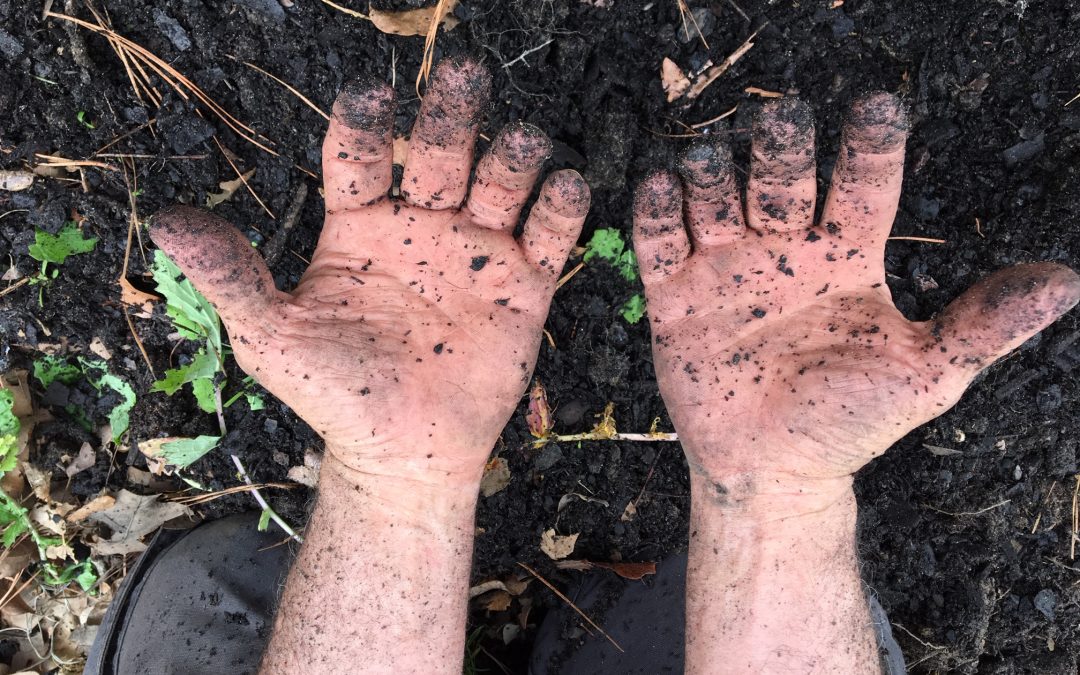For me, there is nothing quite like the feeling of getting my hands dirty. Getting down into the dirt and feeling it against your skin, the smell of the rich Earth in your nostrils, seeing it under your nails and in the cracks and crevices of your hands. I am in my element at times like this.
On this particular day, I was working in my garden and it was time to harvest the rest of winter crops of mustard greens, turnips, radishes and lettuce as I prepared for the upcoming Spring planting.
I come from a long line of farm folk on my dad’s side of the family. The majority of my childhood was spent on our farm in Kentwood digging, plowing, planting and harvesting. I can’t even count the memories of shucking corn, shelling peas, snapping beans and piling some of the heaviest watermelons I have ever seen into the back of our truck to be sold back in Baton Rouge on the corner of Winbourne Avenue and North Foster.
So as I pulled vegetable after vegetable out of the ground and stacked them in individual piles I began to recall what all would be needed that day to not only harvest them but also clean them and prepare them for freezing.
It’s not just a matter of pulling the plants out of the dirt; there are numerous steps that have to be followed before they are put away for later use.
Turnips have to be sorted, washed, peeled, chopped and rewashed for starters. Then they have to be blanched in boiling water to seal in nutrients and then immediately cooled to stop the cooking process before packing them in plastic bags for freezing.
Mustard greens require an entirely different process. This leafy vegetable requires individual sorting to pull out any decay. They have to be chopped and then the washing begins. They have to be washed repeatedly in fresh, cold water to remove the grit and dirt. My friend Maxine told me about a secret of adding baking soda to the water to help in the loosening of the dirt. The washing is a time-consuming process.
–
Son, these greens are about to kill your Grandmama.
–
I’ll never forget one time, I called my Grandmother one Saturday afternoon and when she answered she was huffing and puffing and sounded like she had just run a marathon. I asked, “Granny WHAT are you doing?” She responded in a winded tone, “Son, (she called all her boys son) these greens are about to kill your Grandmama.” I laughed out loud and responded with so much amusement, “You got this. The grit on those greens doesn’t stand a chance against you Granny.” She was so determined on having no grit at all that I would sometimes say that she could wash the green out of the greens!
To this day, there’s not a single time that I don’t recall that memory with a huge smile when I am there in the midst of a battle with the dirt and grit on a large pile of dark green, leafy greens.
Confession. The dirt and grit never bothered me if I crunched down on some in my cooked greens but others of whom I share the green goodness are not such the fan that I am.
But I digress. Let’s get back to the garden.
At first, I thought to myself, to hell with this work, I’m going to put all this in the compost bin and go do something else. But I just couldn’t let the time I had put into this season’s garden end like that. Besides, Granny would roll over in her grave if I did such a thing.
–
Growing is a process that takes planning and preparing.
–
You see growing food is a process and it takes time, commitment and dedication. It takes planning and preparing. It also requires learning and trying new things. Vegetable beds have to be tended to throughout the year and each season requires a little bit more work to build upon the success (or failure) of the previous season.
Growing also requires the acceptance of a lot of failures.
To this day, I have yet to have a successful growing season of tomatoes at my place on Clear Lake. I will have the most amazing bushes with gorgeous blooms but not a single damn fruit! I’m experimenting with the PH, the amount of water and several other factors just knowing that one day, I will hit the mother load of tomatoes. I will be on the cover of the Tomato Times monthly magazine. There will be a parade in my honor for the most amazing tomatoes ever. I just know it to will come, one day!
–
It requires me to trust in a process that I have no actual control over.
–
But growing takes something else. It requires me to trust in a process that I have no actual control over. I can plant the seeds, nurture the seedlings, and care for the plants as they grow but the actual growth is something I have absolutely no influence over. It just happens. It’s part of a greater knowing.
I think about this often as it relates to other areas of my life whether it is one of my businesses, relationships, or hobbies.
I need to know my part, know my responsibility and to know what deliberate actions I need to take. But more importantly, I strive to know when to simply trust the process and step out of the way and allow whatever outcome I desire to happen. Because honestly, the less I am involved at a certain point the more dynamic and magnificent the end result. And even though I know this to be true, it is still one of the most difficult things for me to put into practice.
I often ask myself, is it time to let go and trust the process? Do I feel that what I have done is good enough for right now? Am I trying to control something that is not mine to control?
These questions allow me to be aware of where I am in that moment and decide what if anything should be done.
The turnips and greens are packed in bags and are in the freezer. The garden is in the midst of being ready for year five of what I am sure will be the best tomato season in the history of mankind. I will know that the process of growth is magnificent and exciting. And I will continue to ask, is it time for me to let go and trust the process.

